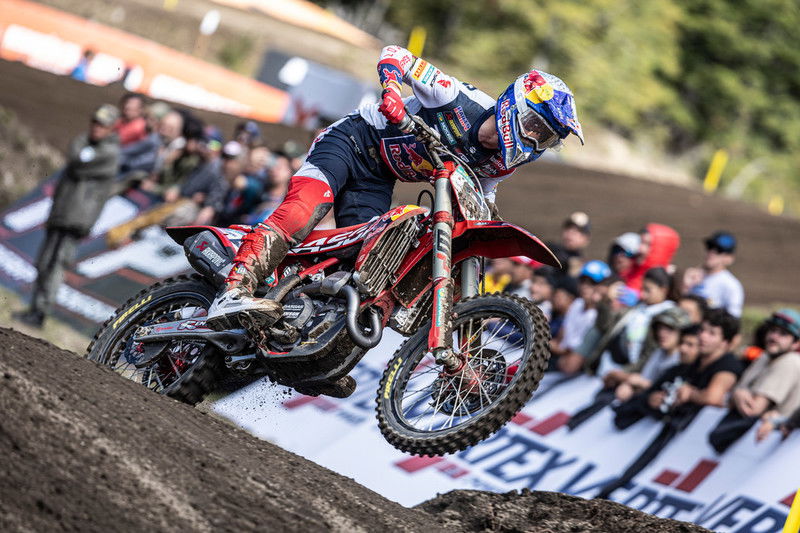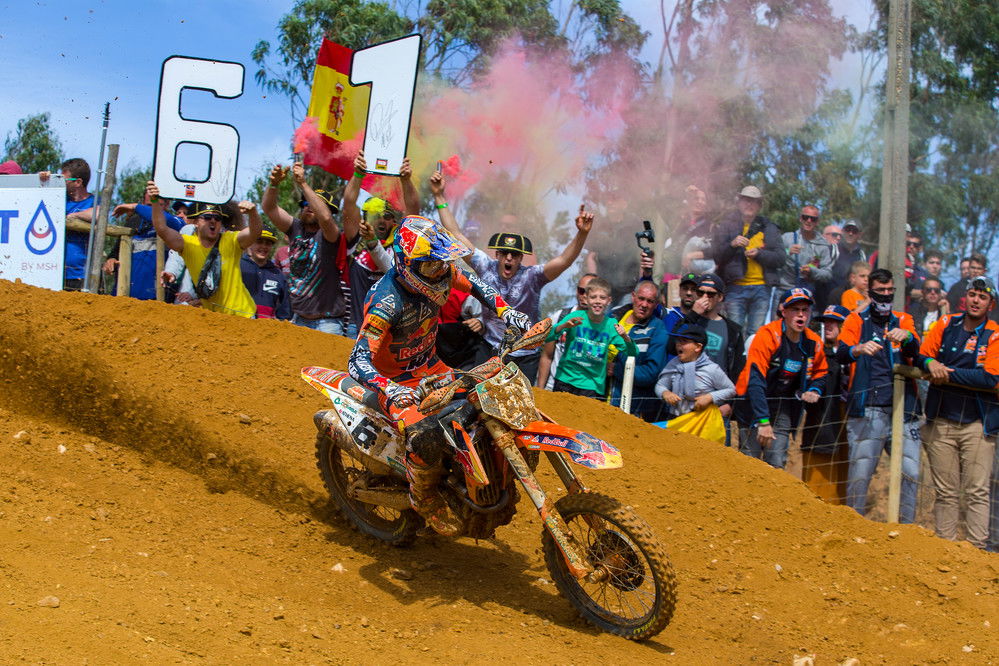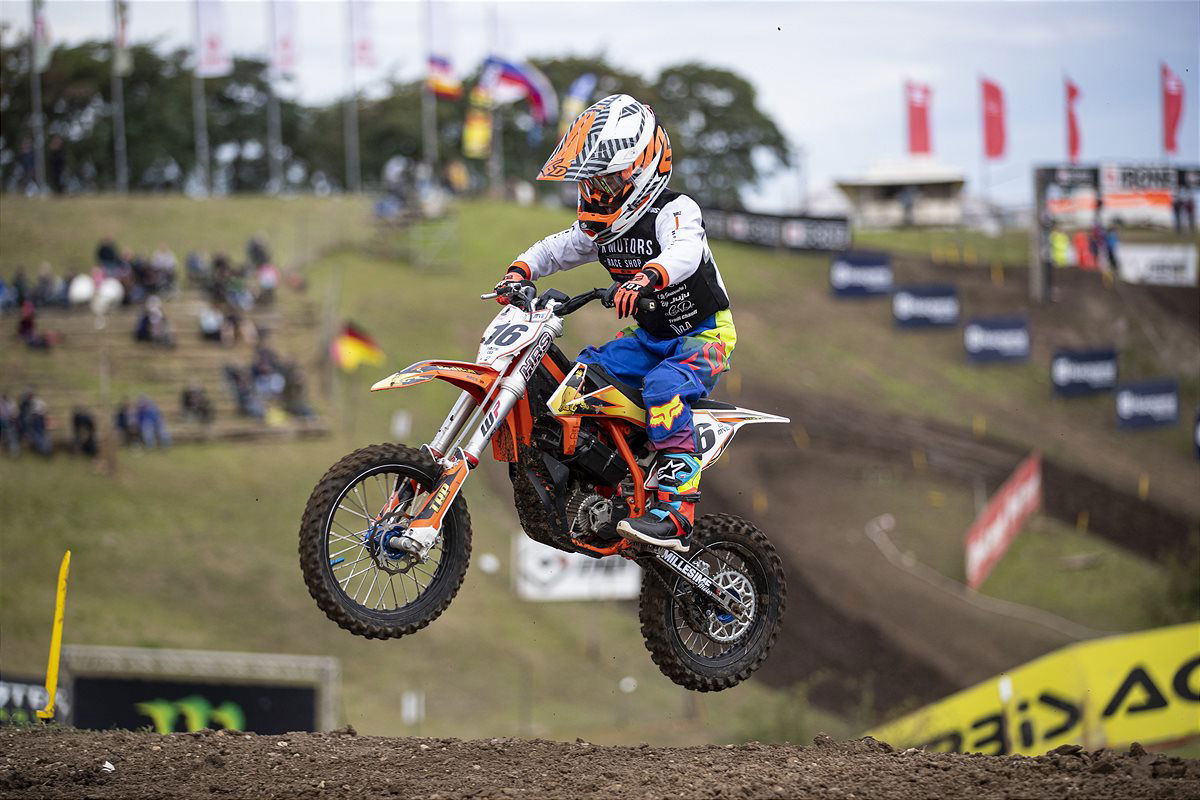Gajser goes three for three with Argentinian victory as gate numbers suffer
TIM Gajser arrived in Argentina having won both the first two Grands Prix of the season, and left with a third 2022 MXGP victory.
After winning both the MXGP of Great Britain in Matterley Basin and the MXGP of Lombardia in Mantova, Tim Gajser went to Argentina as the man to beat. With that target on his back, he put in another stellar performance to leave with his undefeated record for the season in tact and an increased points lead.
.jpg?width=1600&aspect_ratio=16:9)
TIM Gajser arrived in Argentina having won both the first two Grands Prix of the season, and left with a third 2022 MXGP victory.
After winning both the MXGP of Great Britain in Matterley Basin and the MXGP of Lombardia in Mantova, Tim Gajser went to Argentina as the man to beat. With that target on his back, he put in another stellar performance to leave with his undefeated record for the season in tact and an increased points lead.

The starts were about the only thing that let Gajser down in Argentina, as he mastered what were tricky conditions, with inconsistent grip, deep ruts in some sections, and some hard edges mixed into the overall soft top dirt that makes up the super-fast Neuquen track.
While Jeremy Seewer made mistakes - like crashing at the start of the second moto with Thomas Kjer Olsen - and Jorge Prado lacked speed all weekend, Gajser remained steadfastly at the front, as he has done all season so far.
In fact, Gajser has not finished a points-paying moto outside of the top two all season in 2021, winning three of the six races so far. Jorge Prado won back-to-back motos, with victory in the second race in Britain, and the first race in Lombardia, and Maxime Renaux won race one in Argentina, but only Gajser is without a finish outside of the top three- or even the top two - in 2022.

After the race in Argentina, Gajser said about his second race, “[After making the holeshot] I did run a little wide so I dropped into second but I quickly re-passed for the lead and then I set about pulling out a gap. By the midway stage I had a good lead and just settled down and controlled the race, winning by over seven seconds. It feels really good to win another overall and extend my lead in the championship.”
That feels like a summary of where the series is at the moment, with Gajser just able to control things from the front. Already, after just three races, Gajser has a 17-point lead over Maxime Renaux, and 23 points - almost a race win - over Jorge Prado. Renaux is of course a rookie, so expecting him to fight for the title this year is maybe too much, especially against a Gajser who is so strong at the moment, but for Prado it must be a disappointment to find himself so far adrift after just six motos.

Indeed, Prado expressed frustration at his riding in an interview after the race with MX Vice’s Lewis Phillips. But, as he also alluded to in the same interview, he has the ability to line up for a race and think with certainty that he is going to holeshot. There is not another rider on the MXGP gate who can think like that (Gajser’s race two holeshot in Neuquen was his first of the season), but it is also true that with a somewhat depleted field the advantage of a holeshot is not the same as it was last year, for example.
Prado, then, has something of an opposite problem to Gajser, who was concerned with his starts when he spoke to MX Vice after Argentina. Gajser’s speed and consistency is solid, while his starts suffer; whereas Prado’s speed comes comparatively infrequently, while his starts often put him at the front.
Since it is most likely Prado who will be Gajser’s main challenger for the championship from this point forwards, it will be important for the series, as well as himself, for Prado to strike back against Gajser at the next round in Portugal.

It will be the first Portuguese Grand Prix since 2019, when Gajser won a depleted MXGP class, and Prado went 1-1 in MX2 as he so often did that year.
And it will be a Portuguese GP with a more complete complement of riders on the gate, after so many missed Argentina. The MXGP gate was not so bad with a number of Argentinian wildcards filling the gate out, but the lack of, for example, Gebben Van Venrooy Yamaha, was notable, even if Beta did eventually decide to go with Jeremy van Horebeek.

But, in MX2, it was a disaster. 15 riders lined up for the restarted second moto after the red flag for the crash of Gianluca Facchetti. The fundamental problem is that teams could not afford to make the trip to South America for just one Grand Prix with little support from Infront, the series’ promoter.
In the past, when Mexico was also a part of the Americas swing, it was more viable, so hopefully that will mean that we do not see such a reduced gate in the Indonesian double header this summer. However, we might be looking at a repeat of the Argentinian problem at the season finale in Oman.
But, the near future is European, so geography will temporarily restock the gate. And, perhaps by the time we get to Indonesia we will find that these European races have seen the likes of Maxime Renaux and Jorge Prado close their respective deficits to Tim Gajser.

.jpeg?width=1600)